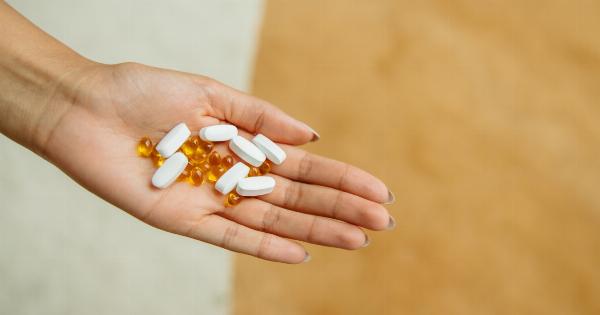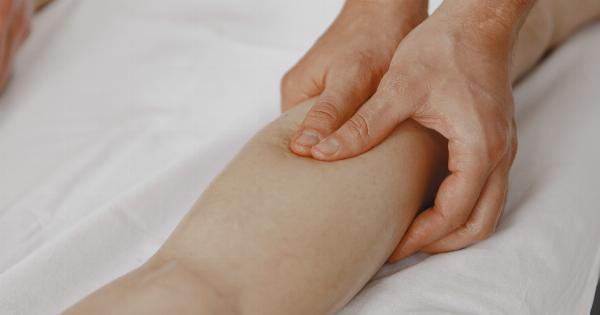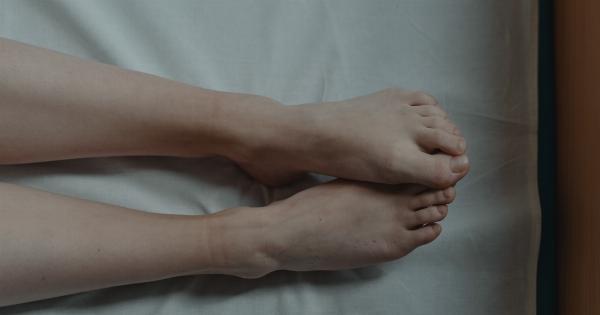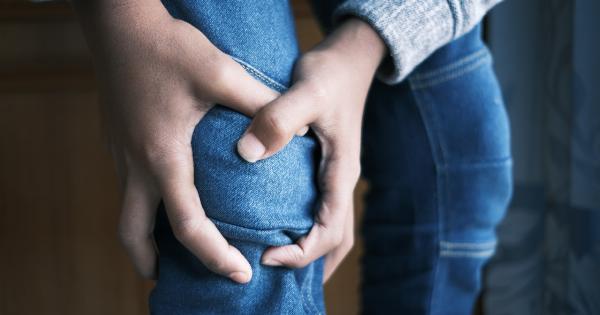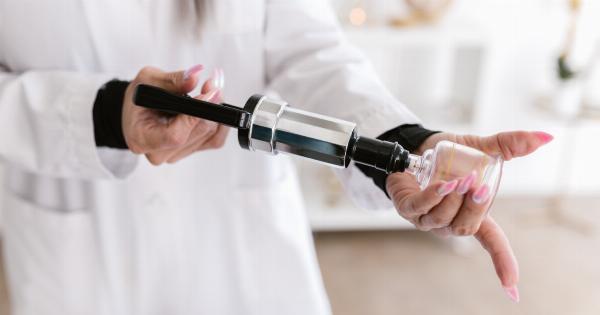Acupuncture is a traditional Chinese medicine technique that involves the insertion of thin needles into specific points on the body. The aim of acupuncture is to stimulate these points to restore the flow of energy, or Qi, in the body.
It has been used for thousands of years to relieve pain and promote overall well-being.
How does Acupuncture Work?
According to traditional Chinese medicine, the body is made up of meridians, or pathways, through which Qi flows. When there is a blockage or imbalance in the flow of Qi, it can lead to pain and disease.
Acupuncture works by stimulating the points along these meridians, thereby restoring balance and promoting healing.
Benefits of Acupuncture for Pain Relief
Acupuncture has been found to be effective in relieving various types of pain, including musculoskeletal pain, chronic headaches, migraines, and menstrual cramps.
It is also commonly used to manage pain associated with conditions such as fibromyalgia, arthritis, and neuropathy.
One of the key benefits of acupuncture is that it provides drug-free pain relief. Many conventional pain medications come with side effects and can be addictive, whereas acupuncture is a natural and non-invasive therapy.
It stimulates the body’s own healing mechanisms, promoting long-term pain relief.
Acupuncture Techniques for Pain Relief
There are different acupuncture techniques used to relieve pain, depending on the nature and location of the pain. The most common technique involves the insertion of fine needles into specific points on the body.
These points may be located near the site of pain or on distant areas that are connected through meridians.
Electroacupuncture is another technique that involves the use of small electrical currents applied to the acupuncture needles. This provides a stronger stimulation and is often used for more severe or chronic pain conditions.
Acupressure is a related technique that involves applying pressure to acupuncture points using fingers, thumbs, or specialized tools. It is often used as a self-care technique for pain relief between acupuncture sessions.
Is Acupuncture Painful?
Many people are hesitant to try acupuncture due to a fear of needles and concerns about pain. However, acupuncture is generally not painful. The needles used are very thin, and most people only experience a mild sensation during insertion.
Some may feel a tingling or dull ache at the site of insertion, but this is usually temporary.
It is important to choose a licensed and experienced acupuncturist who can ensure the insertion of needles is done safely and comfortably. They will also be able to address any concerns or anxieties you may have about the procedure.
What to Expect During an Acupuncture Session?
During an acupuncture session, the acupuncturist will begin by taking a detailed medical history and discussing your specific concerns and symptoms.
They will then examine your tongue and pulse, as these are important diagnostic tools in traditional Chinese medicine.
Next, the acupuncturist will insert the needles into the predetermined acupuncture points. The number of needles used will vary depending on the condition being treated.
Some people may only need a few needles, while others may have several placed in different areas of the body.
Once the needles are inserted, you will be left to rest and relax for about 15-30 minutes. Many people find this part of the session to be very calming and may even fall asleep.
The acupuncturist may also use additional techniques such as heat therapy or electrical stimulation to enhance the effects of the treatment.
How Many Sessions are Needed?
The number of acupuncture sessions needed will vary depending on the individual and the condition being treated.
Some people may experience immediate relief after just one session, while others may require multiple sessions to achieve the desired results.
For acute conditions, such as a recent injury or pain flare-up, fewer sessions may be needed. Chronic conditions, on the other hand, may require regular and ongoing acupuncture treatments to manage the pain effectively.
Your acupuncturist will be able to discuss a treatment plan with you based on your specific condition and goals. They will be able to determine the frequency and duration of sessions needed to achieve the best outcomes.
What are the Risks and Side Effects of Acupuncture?
Acupuncture is generally a safe and well-tolerated therapy when conducted by a trained professional. However, there are some potential risks and side effects to be aware of.
Common side effects include temporary soreness, bruising, or minor bleeding at the site of needle insertion. These usually resolve on their own within a few days.
In rare cases, more serious side effects such as infection, nerve damage, or organ puncture can occur.
However, these risks are extremely low when acupuncture is performed by a licensed and qualified practitioner who follows appropriate safety protocols.
It is important to inform your acupuncturist about any pre-existing medical conditions or medications you are taking to ensure safe and effective treatment.
Acupuncture and Holistic Health
Acupuncture is not just about relieving pain; it is also a holistic therapy that promotes overall health and well-being.
Traditional Chinese medicine views the body as a whole, interconnected system, and acupuncture aims to restore balance and harmony within this system.
Many people report improvements in their sleep, mood, digestion, and immune function after receiving acupuncture. It is believed to support the body’s natural healing abilities, boost energy levels, and reduce stress.
The Importance of Choosing a Qualified Acupuncturist
When considering acupuncture for pain relief, it is essential to choose a qualified and licensed acupuncturist. In many countries, acupuncturists are regulated and must meet certain educational and professional standards.
Look for an acupuncturist who is registered with a recognized professional organization and has completed appropriate training and certification.
They should also have experience in treating the specific type of pain or condition you are seeking relief for.
It is also important to feel comfortable and trust your acupuncturist. A good acupuncturist will take the time to listen to your concerns, explain the treatment plan, and answer any questions you may have.
Conclusion
Acupuncture is a natural and effective therapy for relieving pain. By stimulating specific points on the body, acupuncture helps restore balance and promote the body’s self-healing mechanisms.
It offers a drug-free and non-invasive alternative to conventional pain medications, with additional benefits for overall health and well-being.









